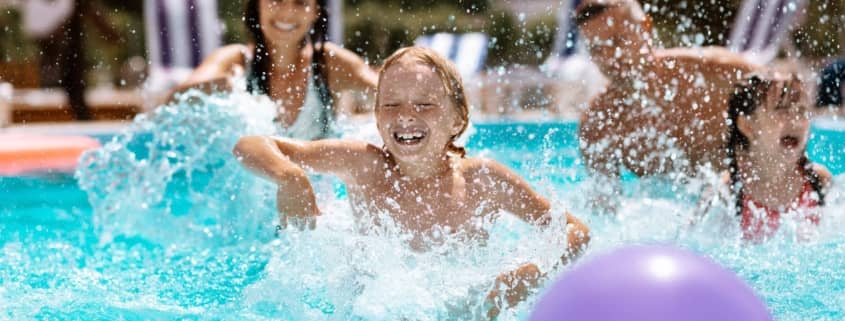Water Safety
Pools, Beaches, Lakes, Rivers…
Gabriela Fernández Álvaro
Nurse
During vacations, we often relax with rules, customs, and routines, the things that make our daily lives predictable and safe. In the first six months of 2022, in Spain, considering only water-related accidents, a total of 140 people died from drowning (55 in the sea, 19 in pools, and 24 in rivers). In June alone, there were 57 unintentional drownings, a very high number that places it as the second June with the highest number of deaths from drowning in the past eight years, with a rising trend (according to INA data).
Surveillance and compliance with rules in aquatic facilities and water-related areas are key recommendations to ensure everyone’s safety.
With young children, it is non-negotiable: they should always be supervised by an adult at a maximum distance that allows for quick action in case of danger. For babies in an aquatic environment, I want to emphasize: “there should always be a hand resting on the baby,” meaning they should always be in contact. We should never leave them alone, neither in the bathtub nor in any aquatic setting.
The best prevention is to teach flotation mechanisms from a very young age. Professional swimming lessons can be a valuable option, promoting social connectivity and “recreation” because learning to swim is fun. Safe water contact has many benefits for development. To assist with flotation and choose the appropriate device, it’s preferable to avoid inflatable ones that can puncture. The best choice is cork: arm floaties, belts, or vests. In my experience (I have three young children), they are invaluable as they allow the baby to float without limiting arm movements, enabling them to learn to swim.
If we choose to spend the day in supervised facilities, we should always review the established rules. With young children, it is very useful to review and explain what we can and cannot do, as well as whom to approach and where to seek help or ask questions. Teaching them not only safety but also respect for rules will be advantageous for their future challenges. Lifeguards are responsible for ensuring that the rules are followed to guarantee everyone’s safety. In public swimming pools, general rules include no running around the pool, no dunking, always looking before jumping into the water in case someone is below, and the use of inflatable devices is usually limited to those necessary for flotation. If we choose the beach, we should be familiar with the meaning of different flag colors to guide our bathing. We should also be aware of dangerous current areas, swim parallel to the shore, and avoid playing in rocky areas. Following the established rules ensures a safer day without surprises.
Useful tip: “When I go to public facilities with my three children (the youngest is three years old), I try to dress them in identical and brightly colored swimsuits so that I can identify them easily among so many people. I place the umbrella near the shoreline and always stay with them so they know where the reference area is. I also put waterproof identification bracelets with my phone number on them in case they get lost.”
Pay attention to the feeling of safety and freedom in private water facilities like family pools. We must be particularly careful and vigilant with young children because most accidents happen here, usually due to a lack of prevention. It is easy to relax and neglect supervision of young children. It is recommended to fence the pool with a secure gate and always ensure they swim in the company of an adult.
We should not forget health recommendations such as avoiding continuous sun exposure during the hours when UV rays are most intense (between 12 PM and 4 PM), protecting ourselves from the sun by applying sunscreen frequently, wearing hats or any accessory that protects the head, and seeking shade whenever possible. You can read more about how to protect yourself from the sun here.
Avoid heavy meals that induce drowsiness, as well as drinks with carbonation, sugar, or alcohol. Remember that the beach and the pool can make you hungry, so bring sliced fruits as snacks and ensure proper hydration with water. Another practical tip: “Make snack time a moment of rest and regrouping, taking advantage of this time to reapply sunscreen.”
Finally, I encourage everyone to take a first aid course. In these courses, we learn how to act in emergency situations and help save lives. When teaching these courses to parents, caregivers, and family members, I always start in the same way: I thank them for attending because we never know when we will have to take action, and we can be very useful to society. I always remind them that before acting in any dangerous situation, the first thing to do is: ASK FOR HELP.



